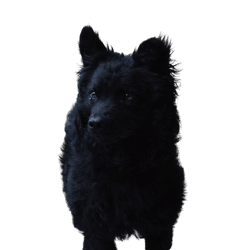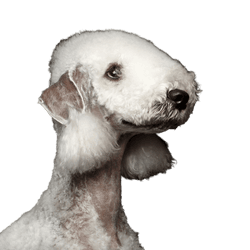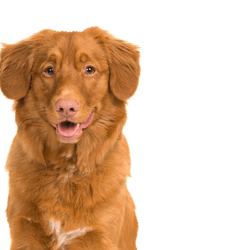
Elo Breed description: Character & Co
Elo
Facts & Origin
What is the origin of the Elo?
The Elo is a young dog breed, which originates in Lower Saxony. In Dedelstorf, the Szobries originally bred Eurasiers and Bobtails. At some point, they had the idea of developing a new breed, which should be particularly child-friendly and have no hunting instinct. They had an animal in mind that would accompany their owners without showing nervousness or aggression. They started breeding Elos in 1987, when the first puppies were born under the name Eloschaboro. Since the breeders could not find a suitable Eurasier males in the beginning, they decided to breed with the similar Chow-Chow. The name Eloschoboro goes back to the original breeds Old English Sheepdog (Bobtail), Eurasier and Chow-Chow. In 1995, the desire arose to breed a smaller companion dog with the same positive characteristics as the Elo. For this reason, Japanese Spitz, Pekinese and miniature Spitz were were crossed in.
What are the breed characteristics of the Elo?
Although the Elo is not recognised by the international dog association FCI, it is increasingly gaining popularity. The Elo can have different sizes, all types have their sturdy head and short muzzle in common. Also characteristic for them are the pointed ears. The Elo carries its bushy tail curled up over its back.




| Alternate Name | Eloschaboro |
| Origin | Germany |
| Life expectancy | 12 - 14 years |
| Care requirements | low-maintenance |
| Activity level | average |
| FCI group | not recognised |
| AKC group | not recognised |
| KC group | not recognised |
Attitude, character and temperament of the breed
What are typical character traits of the Elo?
- Agreeable,
- affectionate and
- child-friendly:
This describes the Elo's character in a few words. The breeding goal, namely to create a companion suitable for the family, has been absolutely successful. If you have children, they will be happy about having such a good-natured playmate. The Elo can adapt to any kind of keeping condition and feels content in the country as well as in the city. Because it has no hunting instinct, you can safely let it run without a leash wherever it is allowed. You will never have problems with this four-legged friend in dog off-leash areas, as it does not show any dominance or aggressiveness towards other dogs. Although the Elo likes to orientate themselves towards their owners, a consistent upbringing is required, as with all breeds. This provided, the Elo will willingly subordinate itself and you will be able to take it to restaurants, on vacation and even to work. If you get them used to it from a young age, you can also leave them alone for a while. Even though the Elo will show itself quiet and calm in the house, they have a strong urge to move. It needs to be exercised every day, no matter the weather condition. As soon as it has finished growing (when it is around one year old), it will gladly accompany you on a run or a bike ride. This clever animal also likes to learn tricks and makes a good impression when dog dancing or doing agility.
Character
Usage

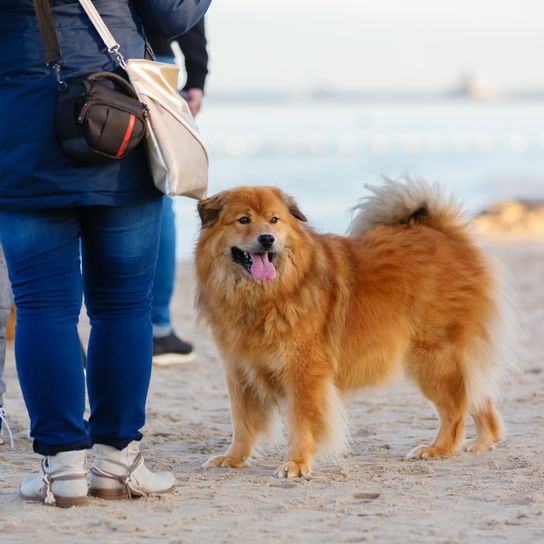

Health and breeding information
What are typical diseases of the Elo?
As the Szobries breeders have always put health first, breed typical diseases are hardly represented. Breeding animals that are prone to developing the following diseases are excluded from breeding:
- Hip Joint Dysplasia
- Eye diseases like glaucoma
- problems with the patella and elbow joints
What should be considered when breeding Elos?
Although the Elo is not an officially recognised dog breed, in 2016 there were 136 Elo breeders registered in Austria, Germany, Switzerland and Belgium. The breed is under trademark protection, which imposes certain requirements on breeding animals. This ensures that you will be able to find a reputable breeder. Elo puppies are best purchased from a breeder that is listed in the Elo Breeding and Research Association. This association maintains a database for the registration of hereditary diseases and excludes animals with a history of disease from breeding. So you can be sure that you will end up with a healthy Elo puppy from a registered breeder.


Appearance and coat of the Elo
Because so many dog breeds are involved in the Elo breed, the animals can have different coat colours. The breeders deliberately chose the parents according to their character and state of health and only secondarily according to their appearance. If you want to buy an Elo, you can choose between smooth or rough haired animals. All breed representatives are characterised by a medium-long coat. In general, all colours are allowed, mostly their base colour is white. Black, red, brown or grey spots provide an attractive colour contrast. In order for the dense coat with its undercoat not to become matted, it is better to brush them several times a week. Especially during the change of coat in spring and autumn it is worth removing dead hairs daily.
What is the average size of an Elo?
Small Elos reach a shoulder height of 35 to 45 centimetres, the large breed representatives 46 to 60 centimetres.
How much does an Elo weigh
Here too, there is a distinction between small (10 to 15 kilograms) and large (22 to 35 kilograms) Elos.
| Fur length | medium |
| Fur | rough-haired |
| Ear shape | Standing Ears |
| Tail | fanned out |
| Anatomy | hefty |
| Size ♀ | 35 - 60 cm |
| Weight ♀ | 10 - 35 kg |
| Size ♂ | 35 - 60 cm |
| Weight ♂ | 10 - 35 kg |
| Suitable For | Beginner, Children |
Colors

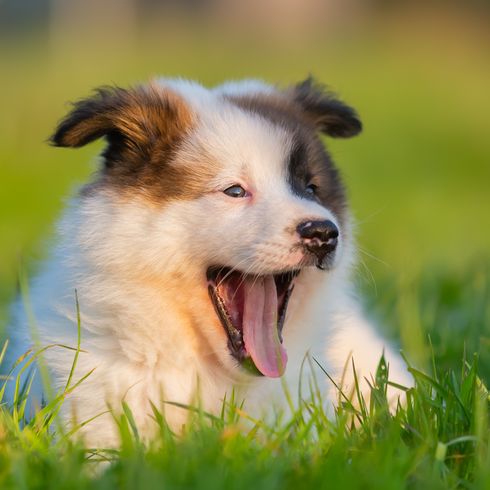


FAQ
-
Since Elo breeding is very rare, you can only ask the prices directly from the breeder. Estimated the puppies are about 2000 euros.
-
An Elo can stay well up to 5 hours alone with enough training.
-
The Elo can live between 12 and 14 years.
Other medium dogs
Useful Articles
You can find articles that might interest you in the dogbible blog to match your favorite breed.
Visit our magazineto stay up to date on dog trends.
To find out more, view our Privacy Policy
Find here the breed that suits you and find out what character traits it has. Here you can also learn more about the origin, size and weight of your favorite breeds.
Matching your favorite breed, you'll find articles that might interest you on the dogbible dog blog.
Female Dog in Heat - what is it?
Recognize abdominal pain in dogs
Dogs in cars - what to watch out for, legal situation and important information
KONG for the dog - the allround toy
First vaccinations for the puppy - Legal situation, What vaccinations are good and important



